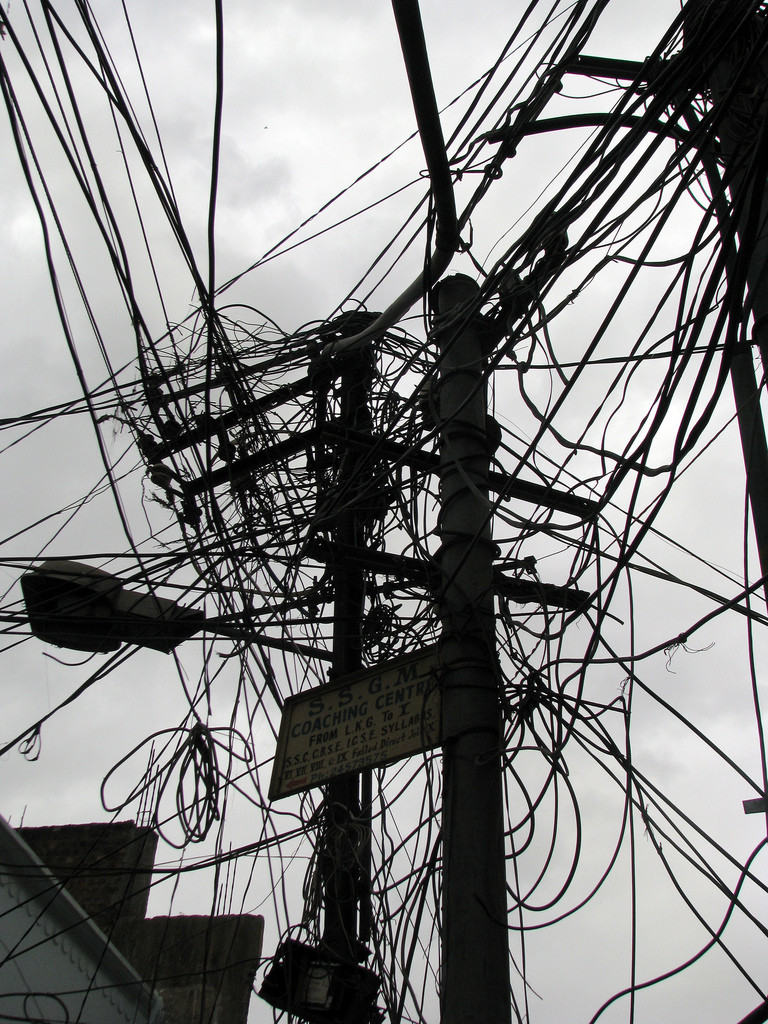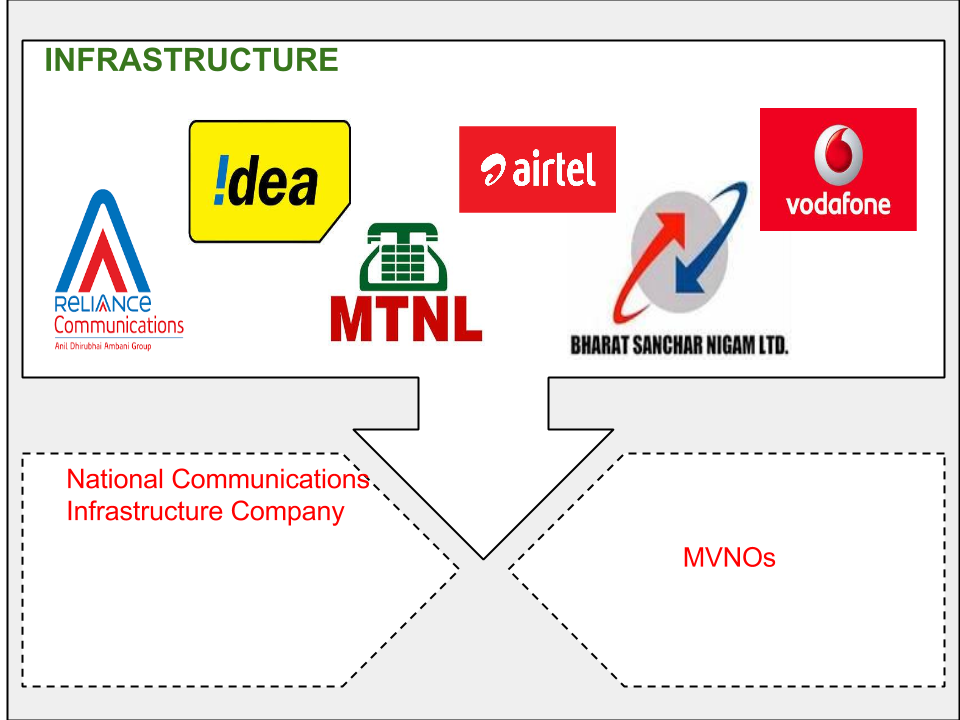I have been observing the Telecom/Internet Infastructure in India both as a former vendor to service providers and also as a customer. I am of the firm opinion that in its current state, the sector will not grow and also shall hinder the progress of the rest of the country by not fulfilling its role as a connectivity provider.
I feel it is time to break the sector proactively and nudge it to bring in disruptive innovation.
Run-down Telecom Infrastructure
The Indian telecom sector is bridled with so many inefficiencies. The telecom companies have no incentives to create innovative offerings, let alone raise their quality of services.

Part of the problem might lie in the fact that creating infrastructure for a pan-India telecom service from the ground up is a huge task. Maintaining whatever infrastructure that has been created is even more of a nightmare.
Every telecom company in every circle needs to dig ditches across cities, towns and villages. Along highways, waterways, railways but mostly in the air on tree tops, roof-tops and even on electricity poles. The CapEx sunk on this infrastructure goes waste many a times, due to the whims and fancies of individual local bodies who decide to fix a road, dig a tunnel or just embark upon some ‘developmental’ work. The fuel costs that goes into powering the diesel generators, inverters for the base stations and repeaters easily consume most of the OpEx.
With the infrastructure in such a mess, no wonder consumers are short-changed or presented with a lack of alternatives.
There are other issues that contribute to the mess too. The state-owned telecom companies serve more as India’s equivalent of a Social Security program rather than efficient and innovative Service Providers. Even ignoring probable corruption, the very nature of their slow and staid operations does a huge disservice to the young and dynamic nation.
Suggestions for a viable and efficient sector
Now, after a thorough panning of the existing situation, here are some suggestions for fixing the sector.

Break the state-owned operators into two parts initially – one, to pool all their infrastructure assets, the second to hold all their operations including subscriptions, plans, etc. The operations part could be further broken into smaller units – a la Baby Bells.
The infrastructure, including highly valuable land, buildings, country wide fiber, last mile copper, etc should be vested with a new company probably called – The National Communications Infrastructure Company. All the private operators should also be asked to hand over their infrastructure assets for a corresponding stake in the new company. This company to be run by professional management drawn from the government, private businesses, academics should be the sole custodian of creating, maintaining and innovating country wide communications infrastructure.
From no MVNOs to only MVNOs
A Mobile Virtual Network Operator (MVNO) builds consumer services on top of leased infrastructure – both last mile and upstream. Currently, India has no MVNOs by design.
The Infrastructure Company should be able to lease out the infrastructure to all the existing players under a compulsory mandate. All existing telecom operators should transition to become MVNOs.
With the costs of capital coming down, there could be new special purpose MVNOs who provides only B2B services, M2M services (very relevant in the context of 100 Smart Cities/IoT),
P2P services. With decreased responsibilities, and increased focus, the new Infrastructure Company as well as the new MVNos are bound to innovate and create valuable products and services for their users. The consumers benefit from a decent competition and reliable services.
The society at large is benefitted by a decrease in the number of road-cutters. Mother earth will be happy because of reduced pollution.
Credits:
- McKay Savage (https://www.flickr.com/photos/mckaysavage/3921003774/)
- Ken Banks (https://www.flickr.com/photos/kiwanja/3170290086/)
- All logos for representation purposes only
